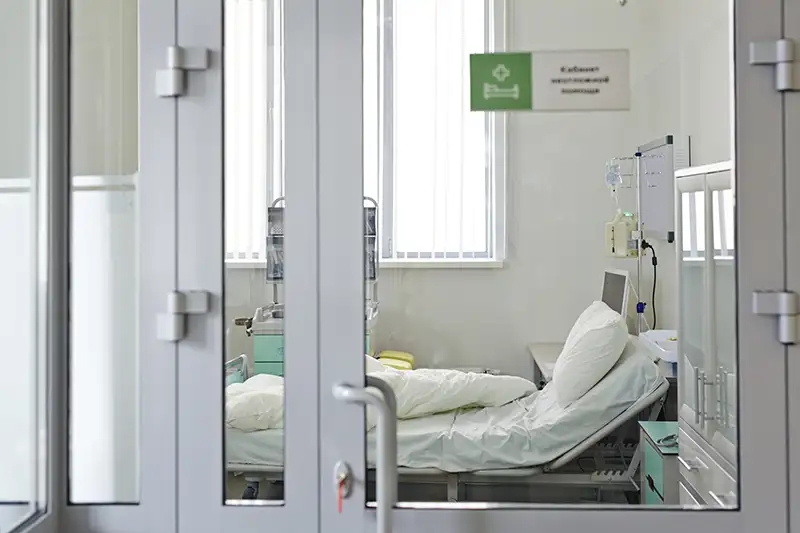
If you don’t have an urgent care marketing plan, or your practice is not investing in urgent care marketing services, you’re missing out on patient growth, and a long-term competitive advantage.
As Urgent Care & ER competition heats up to cover gaps in the current Healthcare system, it’s more important than ever to understand which Urgent Care marketing strategies are going to provide the best return on your investment.
At RUNNER, we specialize in medical practice marketing and have deep experience providing urgent care marketing services to Urgent Care practices and freestanding ERs. We know what really drives new patient growth. This guide to Urgent Care Marketing provides a blueprint for what we’ve seen drive new patients.
In fact, you can read a few of our case studies for both Urgent Care marketing and ER marketing.
1. Build Out Your ER & Urgent Care Practice Listings Fully
Your practice listings, especially your Google Business Profile, are the lifeblood of digital marketing for an Urgent Care or Emergency Room. When a patient is in need of urgent care and searching near them, these are the listings they are most likely to see. In fact, many of them may not ever visit your website, but look solely at these listings.
You must not only claim these listings, but build them out as much as possible. The mistake that many Urgent Care practices make is not fully utilizing all the descriptions and features that these practice listings provide. Simply put – when your listings are built out in more detail than your competitors, patients will choose you more often.
It’s also important to acknowledge that the majority of your Google organic search traffic will come from these Google Business Profile listings, making these listings the most important aspect of local SEO for urgent care practices. One of our recent Urgent Care clients was seeing around 70% of organic Google traffic coming from these listings, rather than website SEO.
2. Your Urgent Care Reviews Matter (But Not As Much As You Think)
One important piece of information for patients is the number and star rating of your reviews. It can be extremely hard for Urgent Cares and Emergency Rooms to receive high average star ratings due to the nature of the emergencies you encounter. This means that patients are a bit more forgiving on the star rating, especially when they’re making decisions based on what’s closest to them.
However, with the right system in place to get better patient reviews, you gain an incredible advantage over the competition.
3. Outline Your Ideal Urgent Care Patient Targeting
One of the most important marketing decisions you can make, especially for paid advertising, is to clearly define your ideal target audience. The following are the most important items for ER and Urgent Care marketers to outline:
Geographic Target Area (Zip Codes)
Get specific here – don’t make the mistake of just targeting a radius around your address. We recommend outlining specific zip codes that you’re most likely to draw patients from. Most practices will only be able to draw from nearby zip codes, unless you have highways that are close and likely to attract patients, or if you have few competitors and can target a wider area.
We also recommend creating a list of former patient zip codes so you truly understand which zip codes have the highest concentration of potential patients.
List of Competitor ER & Urgent Care Locations
This is most important for understanding targeting and where you might overlap with nearby competitors. You’re more likely to see a higher cost-per-new-patient in those zip codes where you have a high amount of competition.
It’s important to identify competitors as you may also want to target competitive names in your advertising. It’s not uncommon for ads to sway potential patients towards your location.
Condition or Service Line Prioritization
We recommend creating a “force ranked” list of the conditions you want to target or services you want to provide. This is important because in your marketing plan, you will need to make decisions about which conditions or services you want to invest time and money into.
Emergency Room or Urgent Care marketers will want to consider this based on the capabilities of the location, as well as business prioritization. We’ve found the best prioritization to be the following – a combination of both potential revenue per patient and volume. Where you find both, you typically find a winning combination.
Insurance Guardrails
Lastly, it’s important to understand what kind of insurance you accept. This will impact both your messaging, as well as potential targeting.
4. Use Google Search Ads to Drive Urgent Care Patients
Now that you’ve outlined your ideal patient target, the best way to begin attracting them to your Urgent Care is Google Search Ads. Unlike every other form of digital marketing, Google Search Ads for Urgent Cares will allow you to target those ACTIVELY looking.
For Urgent Care practices, this means the ability to target patients in the exact moment they are looking for an urgent care need.
We recommend creating Google Search ads campaigns that target those looking for Urgent Cares, Emergency Rooms or Hospitals. It’s important to remember that you should run ads for all keywords, as patients don’t always understand the capabilities of your practice or which type of practice they should visit. We know that commonly people will visit hospital emergency rooms with matters that could be resolved by a visit to an Urgent Care or a freestanding ER.
You also need to make sure that you’re spending enough money on Google Search Ads to impact your ER or Urgent Care patient counts. How much do you need to spend? It depends on the population density in your target locations, as well as the competition. The more dense the population or more active the competitive landscape, the more you’ll need to spend. If you’d like a good/better/best recommendation on advertising spend, request a free ER & Urgent Care marketing consultation to speak with a RUNNER marketing expert.
What’s possible when you’re using targeted Google Ads in the right way? You can have a significant impact on patients.
Read this case study on how we drove a 56% increase in ER patients within the first 60 days for a multi-location Emergency Room
5. Create Messaging That Differentiates Your Urgent Care
Defining key messaging is important, especially since it’s likely you’ll be running ads next other other Emergency Room, Urgent Care and hospital competitors. You should spend some time looking at what other messages your competitors are putting out there.
Here are a few key messages that are most important for you to define what you can say in your Urgent Care marketing.
Urgent Care Wait Times
This is probably the most important message you need to nail down if you’re providing walk-in services. Many practices are hesitant to commit, but common messages we see include:
- No wait (yes, some competitors will say this)
- Short wait times
- Be seen in minutes
- Online check-in (if you do offer it, make sure to include)
Urgent Care Hours of Operation
If you’re a 24/7 operation, make sure it’s clear. If not, be transparent with your hours and we’d recommend dayparting your ads to not run during those hours you are closed.
Diagnostic Imaging & Labs
Do you have your own labs on site? What kind of imaging can you do? Mentioning these could help you stand out from competitors who haven’t done so, and at the very least will provide some peace of mind to a patient who feels they need it.
Urgent Care Competitive Differences
Especially if you’re competing against hospitals, you might want to include messaging that will create preference for your Urgent Care or ER location. One common example we see that does this: “Skip the ER Wait Times.”
These are just a few examples. What’s most important is that you address patient questions and differentiate your brand.
Read this case study on how RUNNER increased daily average patients by 33% for ER Katy.
6. Social Media Ads to Build Your Urgent Care Brand
Google Search Ads should be the primary paid advertising strategy for Urgent Care patient acquisition. However, social platforms like Meta (Facebook & Instagram) are a good addition to your paid advertising efforts.
We recommend running “brand” ads that showcase your Urgent Care location, as well as the conditions you treat and services you provide. These ads will keep your Urgent Care top-of-mind for nearby patients when they may need you in the future.
But remember – these ads are not going to drive patients like Google Search Ads do. That’s because only Google Search Ads are able to target people in the moment they’re looking for urgent care. Social media ads like Facebook and Instagram are only able to demographics and interests in the zip codes you’re targeting. This won’t drive patients in the short-term.
7. Set Up Marketing Tracking to Get Smart
In order to properly measure the success of your Urgent Care marketing, the tracking for your marketing efforts must be set up and configured properly.
What does that mean? It means you have to define the right KPIs to pay attention to. For Urgent Care marketing, the KPIs are very different than other practices. Mostly because you have many more walk-in patients that are not calling or scheduling appointments ahead of time.
The implication is that the typical “KPIs” you’d target as an Urgent Care are only directional. Here are a list of the common KPIs we recommend for ER & Urgent Care marketers to track:
- Calls or Click-to-Calls
- Contact Us (or request appointment if you have for Urgent Care)
- Online Check-In (if you provide)
- Visits to location pages that have maps, phone numbers
- Clicks on maps to get directions
Again, these KPIs are only “directional” – meaning you will not always see a correlation between these leads and new patients. But they are meant to provide you some insight. For example – if you have a zip code that you’re paying a large amount of ad spend into, but you’re not seeing any leads generated, or a very high cost-per-lead, this may indicate that zip code doesn’t have enough patients, is too far away, or people in those zip code are more often choosing a competitor.
The most important KPI is actually patient data.
8. Create a Feedback Loop with Urgent Care Patient Data
The real way that Urgent Care marketing is measured is through an observed lift in new patients. This is done by keeping a close eye on patient data, and how it responds to changes in your paid advertising, including increases in ad spend or changes in targeting.
The good news is that if you’re targeting patients that are actively looking for an Urgent Care, you will typically see an impact fairly quickly on patient counts.
So the most important thing to do provide a way to share patient counts on a frequent (weekly or bi-weekly) cadence with your marketing team or Urgent Care marketing agency, as well as sharing insights around patient zip codes.
This kind of sharing of data will help you optimize your Urgent Care advertising efforts more quickly. While you can see a quick impact in patient counts, if you optimize regularly you will continue to see gains and increases over time.
9. Use SEO Content to Build Long-Term Visibility in Google
While Google Search Ads are best at targeting “Urgent Care Near me” terms, there is a huge opportunity for Urgent Care marketers to target things like conditions and treatments using SEO. Some of these conditions are either too expensive or too competitive to target using paid ads. But if you rank organically for them, they can both drive patients and build trust.
How do you do this? By creating blog or site educational content around your prioritized conditions and treatments. We’d recommend taking your prioritized list of conditions and treatments and doing keyword research to understand which terms have the highest volume and will be easiest to rank for, and starting there. RUNNER can help build this strategy for you.
Make sure to include important local SEO signals like your location name in the content. If you have multiple locations, then you need to create separate content for each location
10. Test & Learn
Lastly, it’s important to build a “test & learn” mentality when approaching your Urgent Care marketing strategy. Have a new zip code you think might be fruitful? Add it to the campaign and test it out to see if you start seeing patients from that zip code show up.
Putting it All Together
Building an ER or Urgent Care marketing strategy is easier when you’re working with an Urgent Care marketing agency like RUNNER. We know how to get more patients through proven strategies and Urgent Care marketing services.
The first step? Request a free consultation with an Urgent Care marketing expert to create a growth plan and explore what a partnership with RUNNER would look like.




